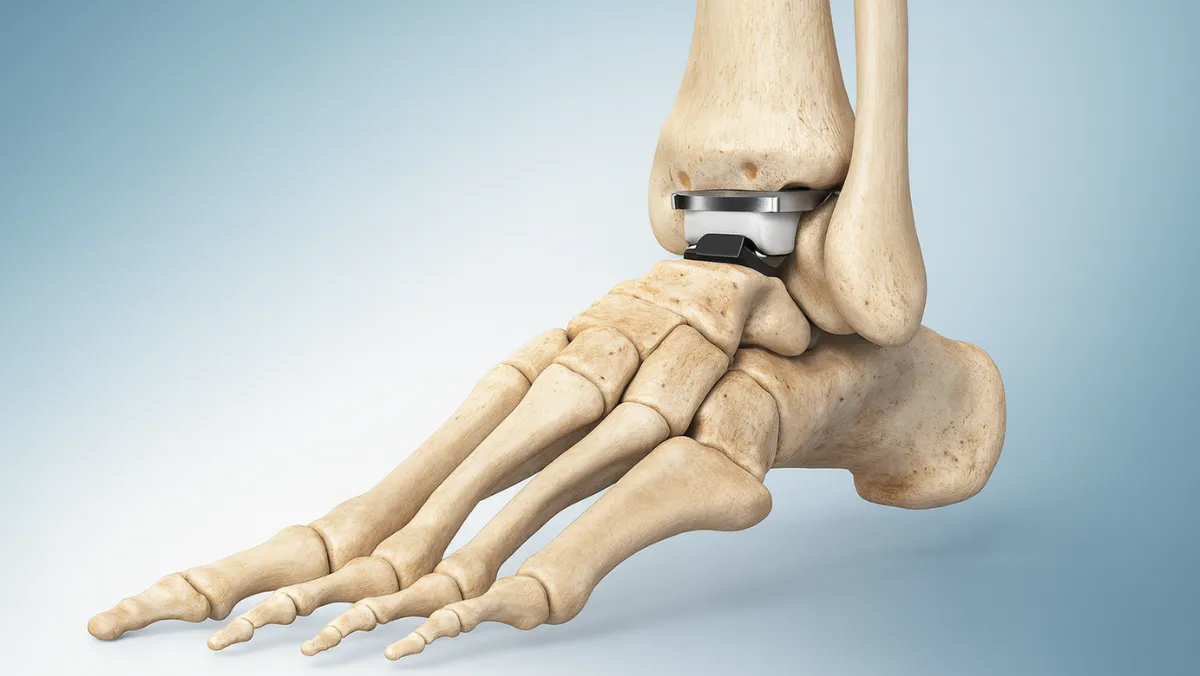
Safety Rate
Chronic ankle pain and stiffness can make simple movements—like walking, climbing stairs, or standing for long periods—extremely difficult. When these symptoms are caused by severe arthritis, past injuries, or joint degeneration, conservative treatments such as medications, physiotherapy, and braces may no longer provide relief. In such cases, Ankle Replacement surgery, also known as Total Ankle Arthroplasty, is a proven solution to restore mobility and reduce pain. This advanced procedure replaces the damaged ankle joint with an artificial implant designed to mimic the natural movement of a healthy ankle.
Ankle replacement is a surgical procedure in which the worn-out or damaged ankle joint is replaced with a prosthetic joint made of metal and medical-grade plastic components. These implants function much like a natural joint, allowing smoother movement, better stability, and improved flexibility.
Unlike ankle fusion—where the joint is permanently stiffened—ankle replacement preserves joint motion, making it an ideal option for patients who want to maintain a more natural walking pattern and mobility.
This procedure is generally recommended for people who experience:
Patients who need to maintain ankle flexibility and range of motion often benefit most from this surgery.
The entire procedure generally takes a few hours, depending on the complexity of the case.
Recovery after ankle replacement requires patience and dedication to rehabilitation:
Ankle Replacement (Total Ankle Arthroplasty) is a highly effective surgical option for individuals suffering from severe ankle pain, stiffness, or arthritis. By replacing the damaged joint with an artificial implant, the procedure restores mobility, reduces discomfort, and allows patients to return to daily activities with greater ease. With proper recovery and rehabilitation, ankle replacement can significantly improve long-term joint health and quality of life, offering a renewed sense of freedom and movement.
Ankle replacements are generally successful in reducing pain and improving mobility for patients with severe arthritis or joint damage. Studies show that around 80–90% of patients experience significant pain relief and better joint function. Success depends on patient health, surgical technique, and adherence to rehabilitation. Long-term outcomes may vary, and some patients may eventually require revision surgery.
Yes, patients can usually walk after an ankle replacement, but recovery is gradual. Initially, weight-bearing may be restricted with crutches or a walker for several weeks. Physical therapy helps restore strength, balance, and range of motion. Most patients can resume normal walking within 3–6 months, while high-impact activities should be avoided to protect the joint.
Yes, ankle replacement is considered major surgery. It involves removing the damaged joint surfaces and replacing them with artificial components. The procedure requires anesthesia, careful alignment of the implant, and a controlled post-surgical rehabilitation plan. As with other major surgeries, there are risks including infection, blood clots, nerve injury, or implant loosening, which require careful monitoring and follow-up.
Take the first step towards pain-free living. Book your consultation today and discover personalized treatment options tailored to your needs.